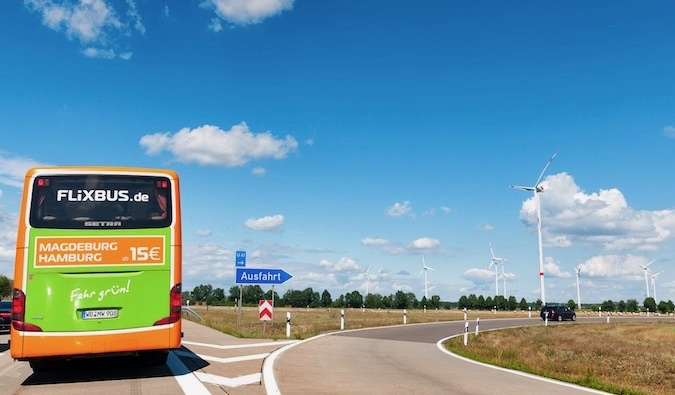
Updated: 6/25/2018 | June 25th, 2018
Travel insurance is one of the most important things you’ll need for your trip. You wouldn’t have a car without car insurance, a home without home insurance, and you can’t have a trip without travel insurance.
Why? Because travel insurance is what will provide you with medical coverage when you get sick or injured, reimburse you when your camera breaks, your flight is canceled, a family member dies and you have to come home, if lose a bag, or something is stolen. It’s all-purpose emergency coverage and is the single most important thing you should get for your trip (but hope to never have to use). It’s the one thing I strongly, strongly advise travelers to never leave home without because I’ve seen it help so many – and so many others regret being cheap and not getting it! For only a few dollars a day, buying travel insurance a no-brainer.
I used it for a doctor in Argentina, when my camera broke in Italy, my eardrum popped in Thailand, and my luggage was stolen in South Africa. Each time I was reimbursed my expenses and was made whole again as they like to say.
Travel insurance was there when my friend had to be helicoptered out of the Amazon after he fell off a boat, when friend’s father died and she had to fly home, and another got her bag stolen. Travel insurance makes sure you don’t lose money and are always protected. (My favorite travel insurance provider is World Nomads. They always have my back when something like the above happens. I’ve been using them since 2003.)
Since most health programs don’t cover you overseas and credit cards offer really limited protection, buying travel insurance is something you definitely need to protect against the unknown. After all, you don’t want to end up like my friend who didn’t have insurance when her computer was stolen and had to pay out of pocket for a new one.
Since travel insurance is one of the most complex, important and confusing aspects of trip planning, I want to break it down for you, help you understand what it is about, and show how to pick the best travel insurance plans in just a few steps:
What to look for in a great travel insurance plan
Insurance is a billion-dollar business, and everyone wants their hand in the cookie jar, thus you face a mind-numbing number of choices that can be confusing and overwhelming. And, often, in the fine print, you’ll find that plans aren’t as good as you thought.
First, make sure your travel insurance offers a high coverage limit on your medical expenses. A good company will provide up to $100,000 in coverage care, though more expensive policies will cover you for higher amounts. The maximum coverage limit you can find is around $1,000,000 USD, though I’m not sure why you would ever need a limit that large. High coverage limits are important because if you get sick, injured, or need serious attention and have to seek professional care, you want to make sure your high hospital bills are covered. The worst thing you can do is go cheap and get a policy with a $20,000 coverage limit, break a leg, and reach that limit before they are done taking care of you. Don’t be cheap with your health. Get minimum coverage of $100,000.
Second, you want to make sure your travel insurance policy also covers emergency evacuation and care that is separate from your medical coverage. If you are hiking in the woods and you break your leg, your policy should cover your evacuation to the hospital. If a natural disaster occurs and you need to be evacuated to somewhere else, your plan should cover that as well. This protection should cover an expense of up to $300,000 USD.
Additionally, evacuation also should mean from the hospital to your home country. Standard emergency evacuation usually includes this provision, but it’s important you double-check a company will cover the cost of your flight back home if you need it.
Third, great travel insurance plan will always include the following provisions:
- Cover most countries in the world
- Some coverage for your electronics (and have the option for a higher coverage limit)
- Cover injury and sudden illnesses
- Twenty-four hour emergency services and help (you don’t want to call to be told to call back later)
- Cover lost, damaged or stolen possessions like jewelry, baggage, documents, cameras, etc.
- Cover cancellations such as hotel bookings, flight, and other transportation bookings if you have a sudden illness, death in the family, or some other emergency
- Cover emergencies, strife in the country visited, etc., that cause you to head home early
- Have financial protection if any company you are using goes bankrupt and you are stuck in another country
A quick note on electronics: Most companies only have a small limit, usually up to $500 USD, as part of their basic coverage. You can often buy supplemental insurance to get a higher amount of coverage. For instance, Clements Insurance offers special coverage for your electronics. Prices vary depending on the country you visit ($145-195 per plan). Moreover, many regular and home insurance companies such as State Farm offer insurance plans that can help you cover your electronics. Be sure to check if you find a travel with a lot of gear!
What’s not covered by your travel insurance
Know what is also not covered by your plan. Most policies do not cover:
- Accidents sustained while participating in extreme adventure activities such as hang gliding, paragliding, or bungee jumping unless you pay extra.
- Alcohol- or drug-related incidents,
- Carelessness in handling your possessions and baggage.
- You won’t get reimbursed if the problem happened because you were reckless (how “reckless” is defined is a matter up to each company).
- Pre-existing conditions or general check-ups. For example, if you have diabetes and need to buy more insulin, you won’t be covered. If you want to go see a doctor for a general check-up, you aren’t covered either.
- Cash
- Your theft coverage won’t cover you if you left something in plain sight or unattended.
- If civil unrest makes your destination unsafe but your government hasn’t called for an evacuation, you’re probably out of luck too.
Travel Insurance Loopholes: What To Look For
Even the best travel insurance have their limits. Often, in the fine print, you’ll find that plans aren’t as good as you thought.
The medical portion of travel insurance is more about emergency care than being a replacement for your normal healthcare. A lot of people purchase travel insurance get disappointed when they find out they can’t go get an annual physical with it.
Remember you will get what you pay for. Maybe you see two companies offer similar plans but one is really cheap? Why? Usually it’s because the devil is in the details and they could have smaller payouts, take longer to process claims, deny more people, or have so many rules in the fine print that it turns out you aren’t going to get paid when you think you are!
Travel insurance is accident insurance. It is there to protect you in case of emergency and, if need be, get you home in a hurry. If you want a global health plan (because you now live in Beijing), you need a completely different type of plan.
To summarize:
| If you want: |
Include this in your travel insurance policy: |
| Payment for expenses if you get sick or injured on a trip |
Travel medical and accident coverage |
| To be taken to the nearest hospital or flown home if necessary |
Emergency evacuation and repatriation |
| Reimbursement if you get sick and have to cancel or end your trip early |
Trip cancellation AND trip interruption |
| Payment for lost, stolen or damaged luggage or goods |
Theft and lost coverage |
| Help finding a doctor abroad |
24-hour assistance |
| Payment for rental car damage |
Car collision insurance (CDW) |
The Best Travel Insurance Companies
The world is FILLED with insurance companies. You’re going to come across thousands in your searches for a good provider so I’m going to list my favorites. Below are the companies I would be OK with my mother using. If you’ve found a company and it’s not listed here, it’s because I wouldn’t use them. I’ve researched hundreds of policies over the last ten years and have found the following companies to be good:
- Clements – Great travel insurance for high-end electronics coverage.
- IM Global – The closest thing to normal health insurance like you have back home that allows you to see doctors and make regular appointments when you. This is best for long-term expats living overseas.
- MedJet Assist – A good company all around for travel insurance that offers standard, cookie cutter plans.
- STA Travel – For cheap folks who just want a cheap plan with very limited coverage, STA Travels offers bare bones planes.
If you’re a senior and over 65, use Insure My Trip. Many insurance companies don’t cover seniors or, if they do, are bloody expensive! Insure My Trip offers the best coverage and prices for older travelers and I suggest you use them.
 My favorite company is World Nomads. I’ve been using them since I started traveling in 2003. They are very reputable, and claims are quickly and fairly processed. This is a company built by an ex-nomad so he gets the traveler mindset. I enjoy World Nomads because I can purchase and renew my insurance policy online in a matter of minutes, they have a very friendly and responsive staff who answer questions and help solve problems via social media, they have great customer feedback, and most importantly, they provide a lot of coverage at a fair price. If there’s one company I would recommend, I would say go with them. They are also endorsed by Lonely Planet and National Geographic, which tells you how good they are!
My favorite company is World Nomads. I’ve been using them since I started traveling in 2003. They are very reputable, and claims are quickly and fairly processed. This is a company built by an ex-nomad so he gets the traveler mindset. I enjoy World Nomads because I can purchase and renew my insurance policy online in a matter of minutes, they have a very friendly and responsive staff who answer questions and help solve problems via social media, they have great customer feedback, and most importantly, they provide a lot of coverage at a fair price. If there’s one company I would recommend, I would say go with them. They are also endorsed by Lonely Planet and National Geographic, which tells you how good they are!
Buy Your Travel Insurance As Soon As Possible
Even though you can wait until you leave, it’s best to get your travel insurance as soon as possible. Every day you wait, there’s a chance something could happen and you can’t get a travel insurance after the fact. If a hurricane ruins your trip, your travel insurance would only cover you if you bought it before the hurricane formed. Buy a plan the day after you go to the doctor but before he tells you you’re sick? Your plan won’t cover you since your original visit happened BEFORE the plan!
Don’t wait to get insurance. I’ve seen it happen too often. The second you know you are going somewhere and have the dates, buy travel insurance!
There’s a 99.99% chance you will never need to use the policy you bought, but accidents happen and life on the road is uncertain. It’s better to be safe than sorry, especially when you are in a different country, thousands of miles from home.
Don’t want to end up like my friend in Peru, who decided against coverage, only to break her arm and have to spend lots of money to get it fixed in Lima.
Be smart and get travel insurance.
You can use the widget below to find an insurance plan for your trip:
STILL CONFUSED? READ NEXT —-> 10 common questions (and answers) about your travel insurance
P.S. – If you’ve found this article helpful, please consider booking via the links here as it helps keep the website community supported and advertiser free. All the companies are ones I use myself in my own travels. If you have any questions, email me!
The post How to Buy the Best Travel Insurance in 2018 appeared first on Nomadic Matt's Travel Site.

from Nomadic Matt's Travel Site https://ift.tt/2v7vtVw









